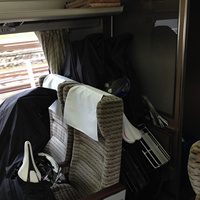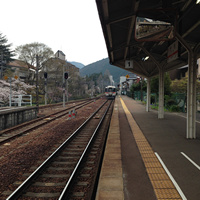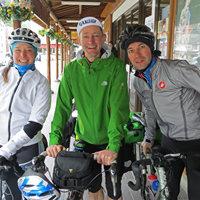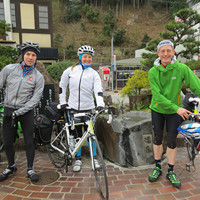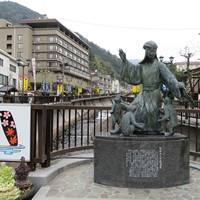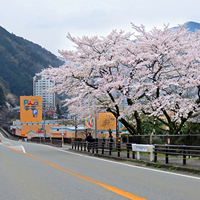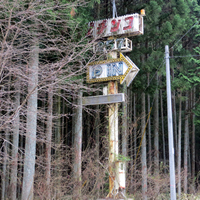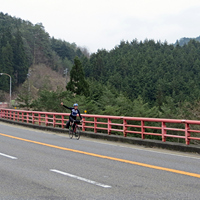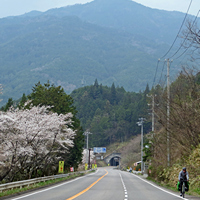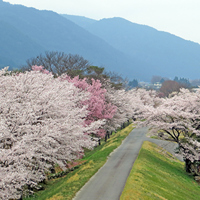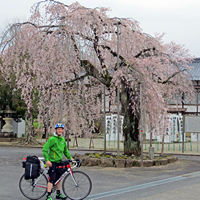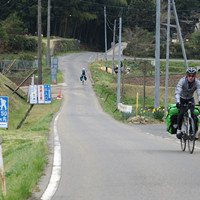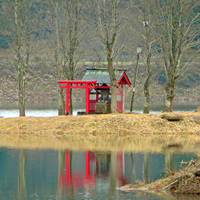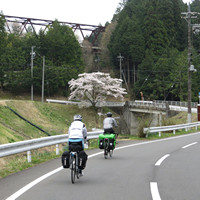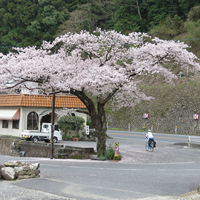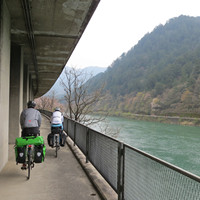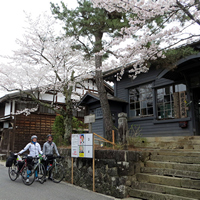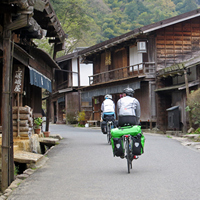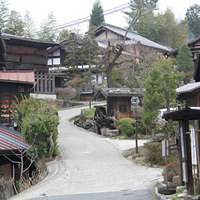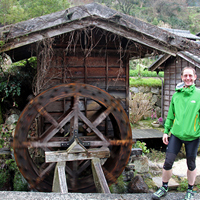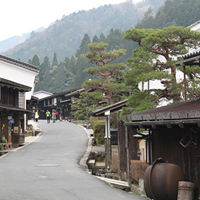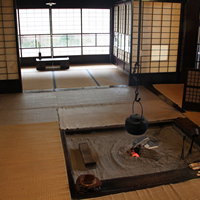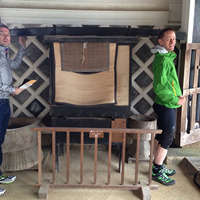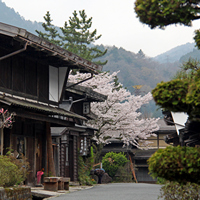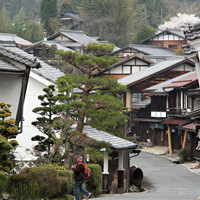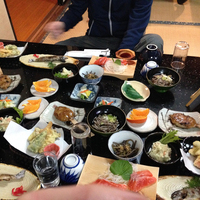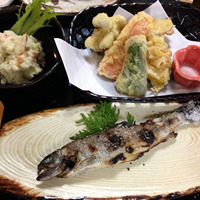Gero to Tsumago-juku
Historic postal town & traditional Ryokan
Friday 10 April 2015

13
°C
65
km

1070
m
The plan was to leave Takayama by bike and cycle the 115km to Tsumago. Our average speed over the first couple of days had been just 13kph though and at this rate we'd arrive at Tsumago after dark. So we decided to cut some distance by taking the train to Gero, leaving about 65km to pedal.
Gero is an attractive town, home to a small number of Gassho style houses but we lingered only for photos at the station and to converse briefly with a local cabbie, fascinated by our bikes and trip.
Gero is an attractive town, home to a small number of Gassho style houses but we lingered only for photos at the station and to converse briefly with a local cabbie, fascinated by our bikes and trip.
Thirty or so kilometres out of Gero, we turned left on to quieter back roads with quaint villages and a scenic lake. We then descended into the aptly named Sakashita it was very nice really but this is it's western name! before joining the busier route 19.
At around 3pm we arrived into Tsumago-juku, a faithfully restored Edo era post town and modern day tourist attraction. Tsumago was the 42nd of 69 rest stations along the historic 'Nakasendo' trade route, which ran from Nihonbashi in Edo (Tokyo to Sanjo Ohashi in Kyoto.
At around 3pm we arrived into Tsumago-juku, a faithfully restored Edo era post town and modern day tourist attraction. Tsumago was the 42nd of 69 rest stations along the historic 'Nakasendo' trade route, which ran from Nihonbashi in Edo (Tokyo to Sanjo Ohashi in Kyoto.
Tsumago now comprises a number of craft shops, museums and guest houses and is worth a few hours of anyone's time. We cycled through first before parking up and finding a cafe for some much needed kōhī, then took a tour of a historic house and museum. Just as we were leaving the heavens opened and the rain came down. We cycled the last few kilometres in drizzle but soon arrived at the accommodation highlight of our trip - a night in a Ryokan.
Ryokan are Japanese inns that originated in the Edo period. They typically feature private tatami-matted rooms with futons, sliding doors, shared bathrooms and in our case, a communal dining room where kaiseki-ryōri, a traditional multi-course dinner is served. Our Kaiseki included soup, tofu, tempura and the most wonderful salted fish!
